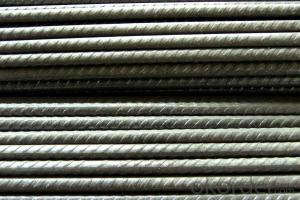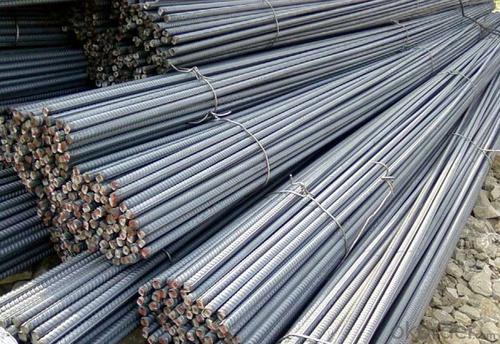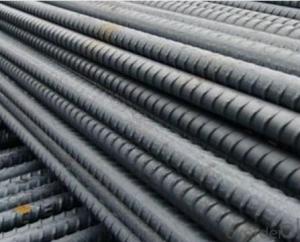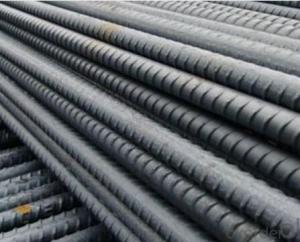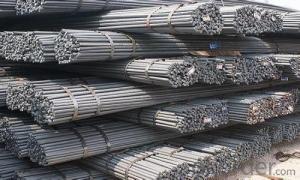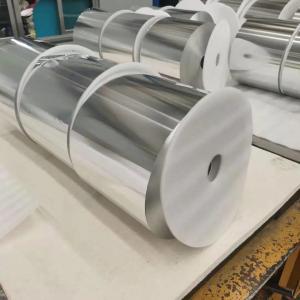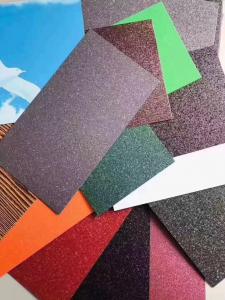Reinforcing Deformed Steel Bar
- Loading Port:
- China Main Port
- Payment Terms:
- TT OR LC
- Min Order Qty:
- -
- Supply Capability:
- -
OKorder Service Pledge
OKorder Financial Service
You Might Also Like
Product Description:
Specifications of Deformed Steel Bar:
Standard | GB | HRB335, HRB400, HRB500 | |
UK | G460B, B500A, B500B,B500C | | |
USA | GR40, GR60 | | |
Diameter | 6mm,8mm,10mm,12mm,14mm,16mm,18mm,20mm, 22mm,25mm,28mm,32mm,36mm,40mm,50mm | | |
| | |||
Length | 6M, 9M,12M or as required | | |
Place of origin | Hebei, China mainland | | |
Application | building,construction,road,bridge etc | | |
Brand name | DRAGON | | |
Theoretical weight and section area of each diameter as below for your information:
Diameter(mm) | Section area (mm²) | Mass(kg/m) |
6 | 28.27 | 0.222 |
8 | 50.27 | 0.395 |
10 | 78.54 | 0.617 |
12 | 113.1 | 0.888 |
14 | 153.9 | 1.21 |
16 | 201.1 | 1.58 |
18 | 254.5 | 2.00 |
20 | 314.2 | 2.47 |
22 | 380.1 | 2.98 |
25 | 490.9 | 3.85 |
28 | 615.8 | 4.83 |
32 | 804.2 | 6.31 |
36 | 1018 | 7.99 |
40 | 1257 | 9.87 |
50 | 1964 | 15.42 |
Usage and Applications of Deformed Steel Bar:
Deformed bar is widely used in buildings, bridges, roads and other engineering construction. Big to highways, railways, bridges, culverts, tunnels, public facilities such as flood control, dam, small to housing construction, beam, column, wall and the foundation of the plate, deformed bar is an integral structure material. With the development of world economy and the vigorous development of infrastructure construction, real estate, the demand for deformed bar will be larger and larger..
Packaging & Delivery of Deformed Steel Bar:
Packaging Detail: products are packed in bundle and then shipped by container or bulk vessel, deformed bar is usually naked strapping delivery, when storing, please pay attention to moisture proof. The performance of rust will produce adverse effect.
Each bundle weight: 2-3MT, or as required
Payment term: TT or L/C
Delivery Detail: within 45 days after received advanced payment or LC.
Label: to be specified by customer, generally, each bundle has 1-2 labels
Trade terms: FOB, CFR, CIF
Deformed Steel Bar in Coil

Produce Line of Deformed Steel Bar
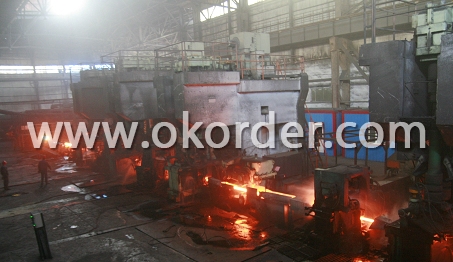
Note:
1. Our products are produced according to national standard (GB), if not, supply according to national standards (GB) or agreement as customer required.
2. Other Grade and Standard Deformed Steel Bar we can supply:
Grade: GR40/GR60, G460B/B500A/B500B/B500C,BST500S
Standard: ASTM, BS, DIN
The Minimum Order Quantity of these products is high, and need to be confirmed.
3. We can not only supply Deformed Steel Bar; if you need anything about building materials, please contact us for further information.
4. Please send us your detail specifications when inquire. We will reply to you as soon as possible. We sincerely hope we can establish a long stable business relationship.
- Q:What is the role of steel rebars in preventing structural vibrations?
- Steel rebars play a crucial role in preventing structural vibrations by providing reinforcement and stability to concrete structures. The rebars, which are embedded within the concrete, enhance the overall strength and rigidity of the structure, making it more resistant to vibrations caused by external factors such as wind, earthquakes, or heavy machinery. The presence of steel rebars helps to distribute and dissipate the energy generated during vibrations, reducing their amplitude and preventing potential structural damage or collapse.
- Q:What are the main properties of steel rebars?
- Steel rebars, also known as reinforcing bars, are essential components in reinforced concrete structures. They possess several key properties that make them ideal for providing strength and durability to these structures. 1. Strength: One of the primary properties of steel rebars is their high tensile strength. They can withstand significant pulling forces and provide the necessary reinforcement to resist cracking and structural failure in concrete. 2. Ductility: Steel rebars exhibit excellent ductility, meaning they can deform without fracturing under stress. This property allows them to absorb energy during seismic events or other extreme loads, enhancing the overall structural performance and resilience of the reinforced concrete. 3. Corrosion resistance: Steel rebars are typically manufactured with a protective layer, such as epoxy or galvanized coating, to prevent corrosion. This property is crucial as exposure to moisture, chloride ions, and other corrosive elements can significantly weaken the rebars and compromise the integrity of the structure. 4. Weldability: Steel rebars can be easily welded together, allowing for efficient and effective construction. This property ensures that rebars can be connected to form a continuous and robust reinforcement network, enhancing the overall strength and stability of the concrete structure. 5. Thermal compatibility: Steel rebars have similar thermal expansion and contraction properties to concrete, minimizing the risk of cracking or structural damage due to temperature changes. This compatibility ensures the long-term durability and stability of reinforced concrete structures. 6. Availability and cost-effectiveness: Steel rebars are widely available and relatively cost-effective compared to other reinforcing materials. This affordability, combined with their excellent mechanical properties, makes them a popular choice for structural reinforcement across various construction projects. In conclusion, the main properties of steel rebars include high tensile strength, ductility, corrosion resistance, weldability, thermal compatibility, and cost-effectiveness. These properties make steel rebars indispensable for providing structural strength and durability to reinforced concrete structures.
- Q:What are the different types of steel rebars used in marine constructions?
- Marine construction commonly utilizes various steel rebars due to their specific properties and resistance to corrosion in saltwater environments. The different types of steel rebars employed in marine constructions are as follows: 1. Stainless steel rebars prove highly resistant to corrosion, making them an ideal choice for marine applications. Their chromium content creates a protective oxide layer on the surface, preventing rust and corrosion. These rebars come in different grades, such as 304 and 316, with 316 being the most commonly used due to its superior corrosion resistance. 2. Galvanized steel rebars, which are carbon steel rebars coated with zinc, act as a barrier against saltwater corrosion. These rebars are cost-effective and widely utilized in marine constructions. 3. Epoxy-coated steel rebars consist of carbon steel rebars coated with epoxy. This coating acts as an effective barrier between the steel and the saltwater environment, providing excellent corrosion protection. Epoxy-coated rebars are commonly employed in marine structures exposed to seawater or other corrosive agents. 4. Fiberglass rebars, made of high-strength glass fibers embedded in a polymer matrix, offer lightweight, non-corrosive alternatives to traditional steel rebars in marine constructions. Additionally, they possess high tensile strength and do not corrode in saltwater environments. 5. Titanium rebars, although more expensive than other steel rebars, are extremely corrosion-resistant and lightweight, making them suitable for marine applications. They are typically used in high-performance marine structures or specific applications where corrosion resistance is crucial. Each type of steel rebar mentioned above possesses unique advantages and limitations. The selection of the appropriate type depends on factors such as project requirements, budget, and environmental conditions. Engineers and designers must consider these factors to ensure the durability and longevity of marine construction structures.
- Q:How do steel rebars affect the overall stability of a structure?
- Steel rebars, or reinforcing bars, play a crucial role in enhancing the overall stability of a structure. They are primarily used to reinforce concrete structures and increase their strength and durability. The inclusion of steel rebars significantly improves the structural integrity of a building or any other construction. One of the key ways steel rebars affect the overall stability of a structure is by strengthening the concrete against tensile forces. While concrete is excellent at withstanding compressive forces, it is relatively weak in resisting tension. Steel rebars, with their high tensile strength, help counteract this weakness by absorbing and distributing tensile forces throughout the structure. This prevents the concrete from cracking or collapsing under excessive tensile loads, thereby enhancing the stability. Moreover, steel rebars also improve the structural stability by enhancing the flexural strength of a structure. Flexural strength refers to a structure's ability to withstand bending or flexing without deforming or failing. By adding steel rebars to reinforced concrete beams, columns, or slabs, the overall flexural strength of the structure increases significantly. This helps prevent excessive deflection and ensures the structure can bear the loads it is subjected to, such as the weight of the building, live loads, or external forces. Additionally, steel rebars contribute to the stability of a structure by resisting shear forces. Shear forces occur when two parts of a structure slide or move in opposite directions. These forces can cause structural failure if not adequately addressed. Steel rebars, when properly placed and anchored, restrain the concrete from shearing, thus preventing potential collapse or instability. Furthermore, steel rebars also improve the stability of a structure by enhancing resistance to seismic forces. In earthquake-prone areas, the inclusion of steel rebars provides the necessary ductility and energy dissipation capacity to withstand seismic activity. The rebars act as a network of interconnected elements, distributing the seismic forces and ensuring the structure remains stable during an earthquake. In conclusion, steel rebars greatly influence the overall stability of a structure by reinforcing concrete against tensile forces, enhancing flexural strength, resisting shear forces, and improving resistance to seismic activity. Their inclusion significantly increases the strength, durability, and integrity of a construction, ensuring it can withstand various loads, forces, and potential hazards, thereby enhancing the overall stability of the structure.
- Q:How are steel rebars measured and priced?
- Steel rebars are measured and priced based on their weight and length. The weight of a steel rebar is usually measured in pounds or kilograms, while the length is measured in feet or meters. The weight of a rebar is determined by its diameter, which is typically measured in millimeters or inches. To calculate the price of a steel rebar, the weight is multiplied by the cost per unit weight. The cost per unit weight can vary depending on factors such as the type of steel used, the market demand, and the supplier. This price is usually quoted in terms of cost per pound or cost per kilogram. In addition to the weight and length, other factors may also influence the pricing of steel rebars. These can include factors such as the grade of steel, the manufacturing process, and any additional treatments or coatings applied to the rebar. It is important to note that the pricing of steel rebars can vary from supplier to supplier, so it is advisable to obtain multiple quotes and compare them before making a purchasing decision.
- Q:How do steel rebars affect the thermal properties of a structure?
- Steel rebars, which are commonly used in reinforced concrete structures, can have a significant impact on the thermal properties of a building or structure. Firstly, steel has a higher thermal conductivity compared to concrete. This means that when steel rebars are embedded within concrete, they can act as thermal bridges, allowing heat to transfer more easily through the structure. This can result in increased heat loss during colder months and increased heat gain during warmer months, leading to higher energy consumption for heating and cooling. Secondly, steel rebars can affect the thermal expansion and contraction of the structure. Steel has a higher coefficient of thermal expansion compared to concrete, meaning it expands and contracts more with changes in temperature. This differential movement between the steel rebars and the surrounding concrete can lead to cracks and structural deformations, which can compromise the overall thermal performance of the structure. Furthermore, steel rebars can also influence the moisture behavior of a structure. Steel has a higher thermal conductivity than concrete, as mentioned earlier, but it also has a higher electrical conductivity. This electrical conductivity can promote the corrosion of steel rebars when they come into contact with moisture or water. Corrosion can lead to the formation of rust, which expands and can further damage the surrounding concrete. This can result in increased moisture ingress, compromising the insulation properties of the structure and potentially leading to mold growth and other moisture-related issues. In conclusion, steel rebars have both direct and indirect impacts on the thermal properties of a structure. They can act as thermal bridges, affecting heat transfer, and their differential thermal expansion and corrosion potential can compromise the overall thermal performance and moisture behavior of the structure. Proper design, insulation, and corrosion protection measures should be taken into consideration to mitigate these effects and ensure optimal thermal performance.
- Q:How do steel rebars contribute to the overall resistance against natural disasters?
- Steel rebars play a vital role in increasing the overall resistance against natural disasters in various ways. To begin with, they are extensively utilized in reinforced concrete structures like buildings, bridges, and dams, which are specifically designed to endure natural disasters such as earthquakes and hurricanes. The incorporation of steel rebars amplifies the structural integrity of these concrete elements, thereby making them more capable of withstanding the forces exerted by such calamities. During earthquakes, the flexible nature of steel rebars allows them to effectively absorb and distribute the seismic energy throughout the structure. This aids in dispersing the destructive forces and diminishing the likelihood of collapse or severe damage. Moreover, the presence of steel rebars enhances the ductility of reinforced concrete structures, enabling them to deform and flex without breaking, thus enhancing their overall resilience against seismic events. In the case of hurricanes or strong winds, steel rebars offer supplementary strength and stability to concrete structures. They function as reinforcement, preventing the concrete from cracking or crumbling under the pressure of high winds. The combination of the tensile strength of steel and the compressive strength of concrete results in a sturdy and long-lasting structure that can withstand the powerful forces generated by hurricanes. Furthermore, steel rebars play a critical role in the construction of flood-resistant structures. During flooding events, the strength and corrosion resistance of steel rebars guarantee the structural integrity of buildings and other infrastructure, preventing them from suffering severe damage or being washed away. The utilization of steel rebars in flood-prone areas aids in creating resilient structures that can withstand the erosive forces of water and remain intact. Overall, steel rebars make a significant contribution to the overall resistance against natural disasters by enhancing the strength, durability, and flexibility of concrete structures. Their presence improves the structural integrity and resilience of buildings, bridges, and other infrastructure, making them more capable of enduring the destructive forces unleashed by earthquakes, hurricanes, and floods.
- Q:What is the difference between carbon steel and stainless steel rebars?
- The main difference between carbon steel and stainless steel rebars lies in their composition and corrosion resistance. Carbon steel rebars are made primarily of iron and carbon, while stainless steel rebars contain iron, chromium, and other alloying elements like nickel and molybdenum. Carbon steel rebars are more susceptible to corrosion compared to stainless steel rebars, especially in environments with high moisture or exposure to chemicals. Stainless steel rebars, on the other hand, have a higher resistance to corrosion due to the presence of chromium, which forms a protective oxide layer on the surface. This makes stainless steel rebars suitable for applications in harsh or corrosive environments, such as marine structures or concrete exposed to chloride ions. Additionally, stainless steel rebars have higher tensile strength and ductility compared to carbon steel rebars. This makes them more suitable for structural applications where high strength and durability are required. Overall, the choice between carbon steel and stainless steel rebars depends on the specific application and the level of corrosion resistance and strength needed.
- Q:How are steel rebars used in the construction of chemical processing plants?
- To reinforce and strengthen chemical processing plants, steel rebars are commonly employed. These rebars, also known as reinforcing bars, are typically crafted from carbon steel and are utilized to fortify various concrete structures like foundations, walls, columns, and beams. Considering the handling of hazardous and corrosive substances in chemical processing plants, the infrastructure is subjected to significant stress. Therefore, the utilization of steel rebars is of utmost importance as it safeguards the integrity of the structures and mitigates the risk of collapse or failure. When constructing chemical processing plants, it is customary to embed steel rebars within the concrete to create a reinforced concrete structure. This amalgamation of concrete and steel rebars forms a composite material that possesses augmented tensile strength, enabling it to endure the heavy loads, vibrations, and extreme temperature fluctuations frequently encountered in chemical plants. Furthermore, the deployment of steel rebars aids in averting cracks and structural deformations caused by shrinkage, settling, or external forces. This is particularly critical in chemical processing plants, where maintaining a secure and stable environment is imperative for employee safety and the plant's operational integrity. Moreover, steel rebars exhibit exceptional resistance to corrosion, a crucial attribute in chemical processing plants where exposure to corrosive chemicals and high humidity levels is prevalent. By serving as a protective barrier for the underlying concrete, steel rebars effectively prevent deterioration induced by corrosion, thereby prolonging the lifespan of the structures and reducing maintenance expenses. Overall, the presence of steel rebars assumes a vital role in the construction of chemical processing plants as they ensure structural stability, durability, and corrosion resistance, all of which are essential for the safe and efficient functioning of these facilities.
- Q:What are the different types of steel rebars used in railway construction?
- There are primarily four types of steel rebars used in railway construction: plain carbon steel rebars, stainless steel rebars, epoxy-coated rebars, and galvanized rebars. Each type offers specific characteristics and benefits, such as corrosion resistance, durability, and strength, to ensure the longevity and stability of railway infrastructure.
1. Manufacturer Overview |
|
|---|---|
| Location | |
| Year Established | |
| Annual Output Value | |
| Main Markets | |
| Company Certifications | |
2. Manufacturer Certificates |
|
|---|---|
| a) Certification Name | |
| Range | |
| Reference | |
| Validity Period | |
3. Manufacturer Capability |
|
|---|---|
| a)Trade Capacity | |
| Nearest Port | |
| Export Percentage | |
| No.of Employees in Trade Department | |
| Language Spoken: | |
| b)Factory Information | |
| Factory Size: | |
| No. of Production Lines | |
| Contract Manufacturing | |
| Product Price Range | |
Send your message to us
Reinforcing Deformed Steel Bar
- Loading Port:
- China Main Port
- Payment Terms:
- TT OR LC
- Min Order Qty:
- -
- Supply Capability:
- -
OKorder Service Pledge
OKorder Financial Service
Similar products
New products
Hot products
Hot Searches
Related keywords


